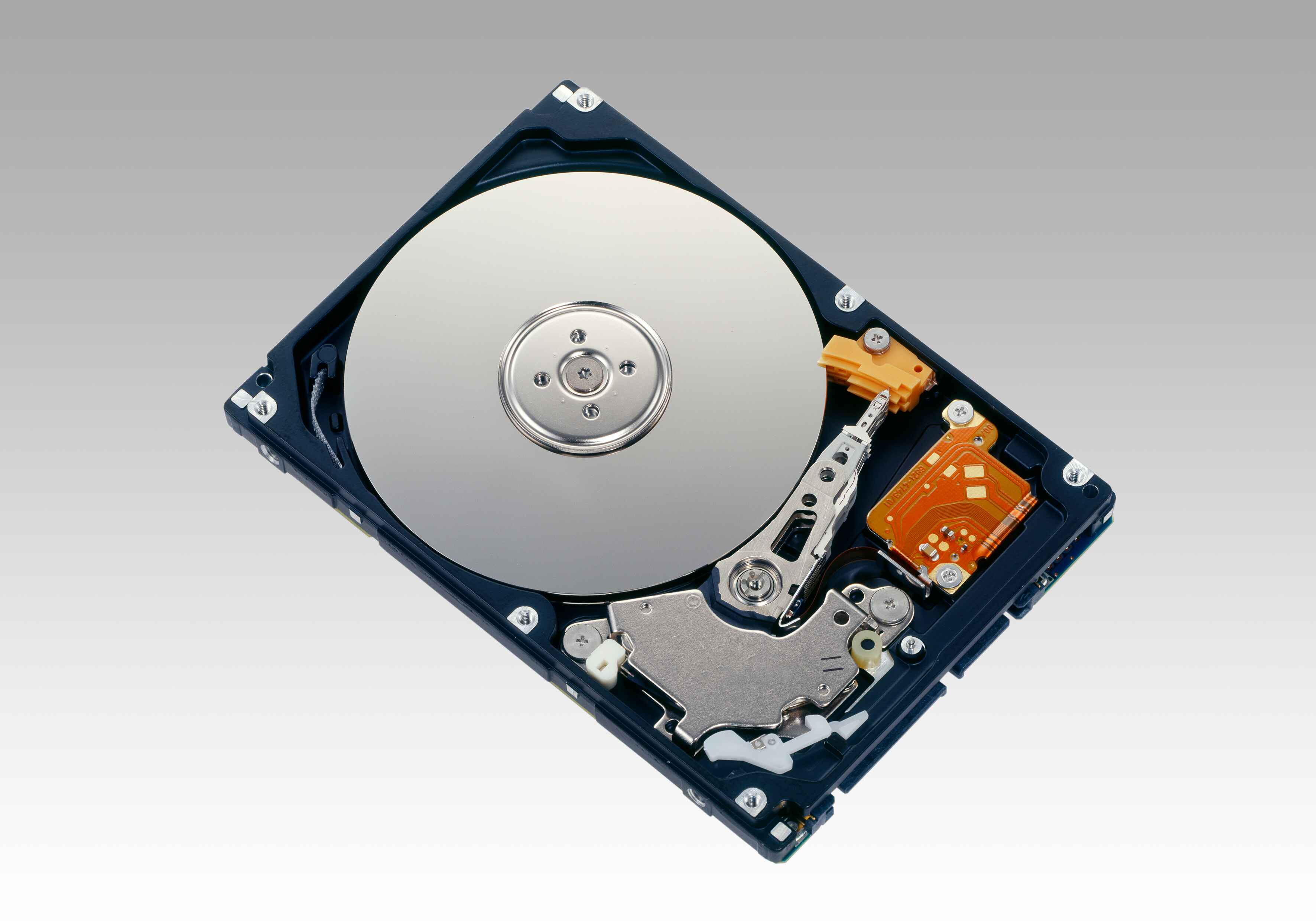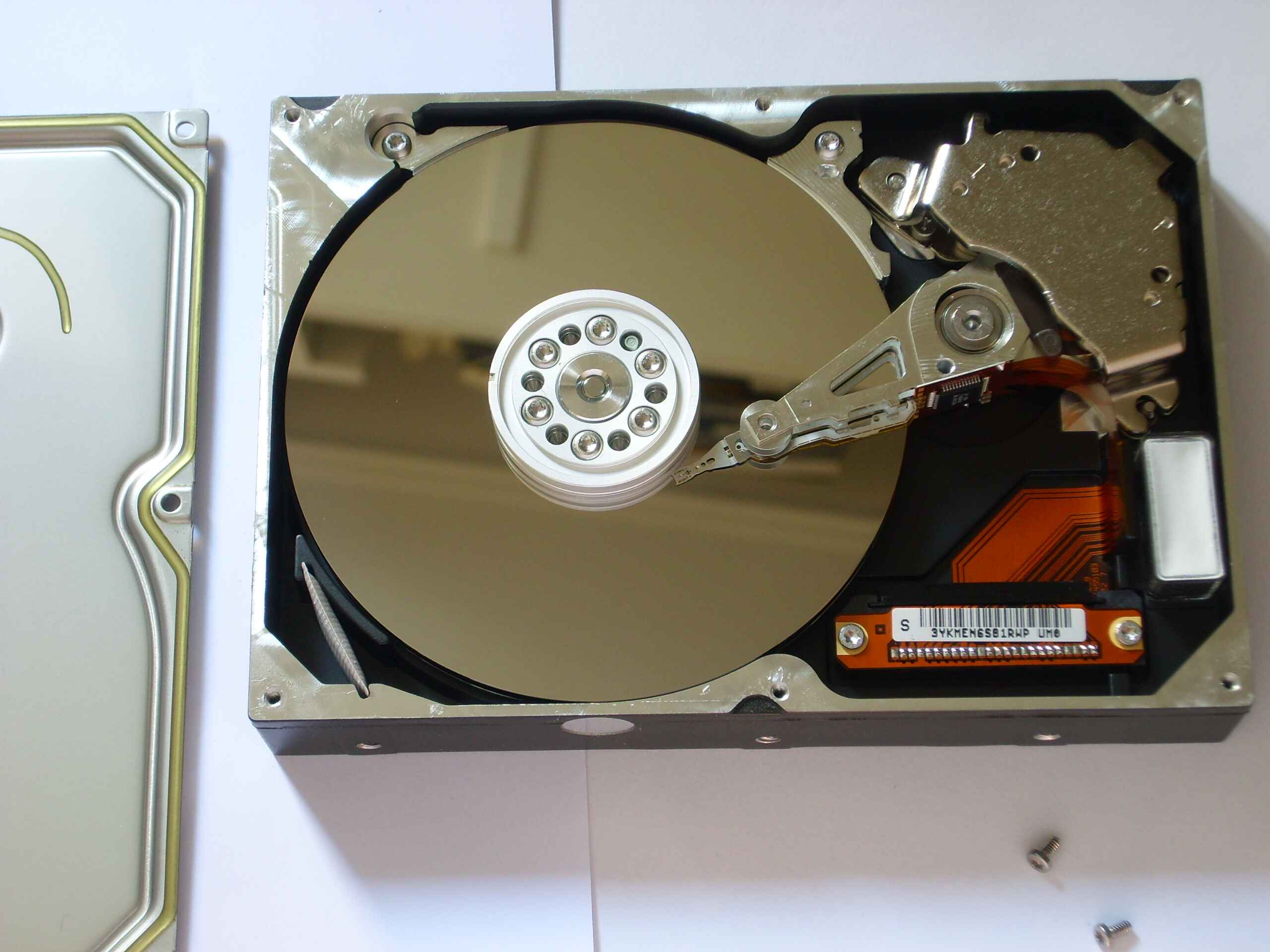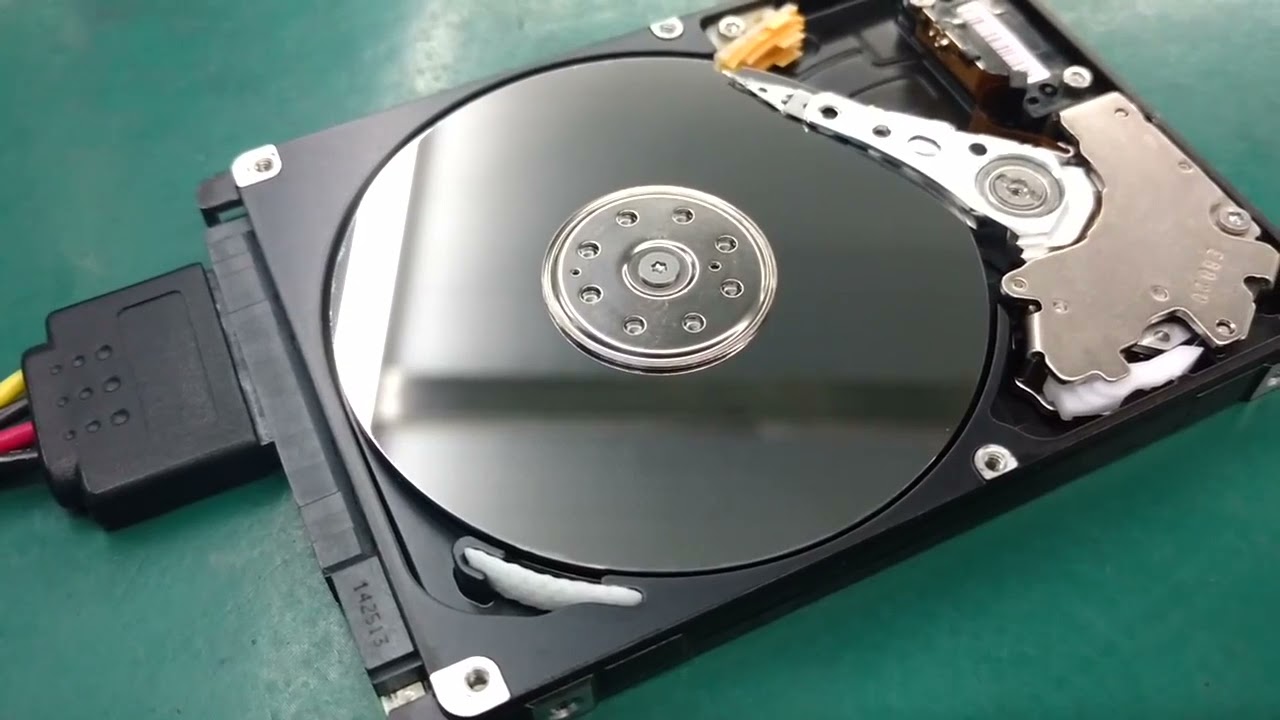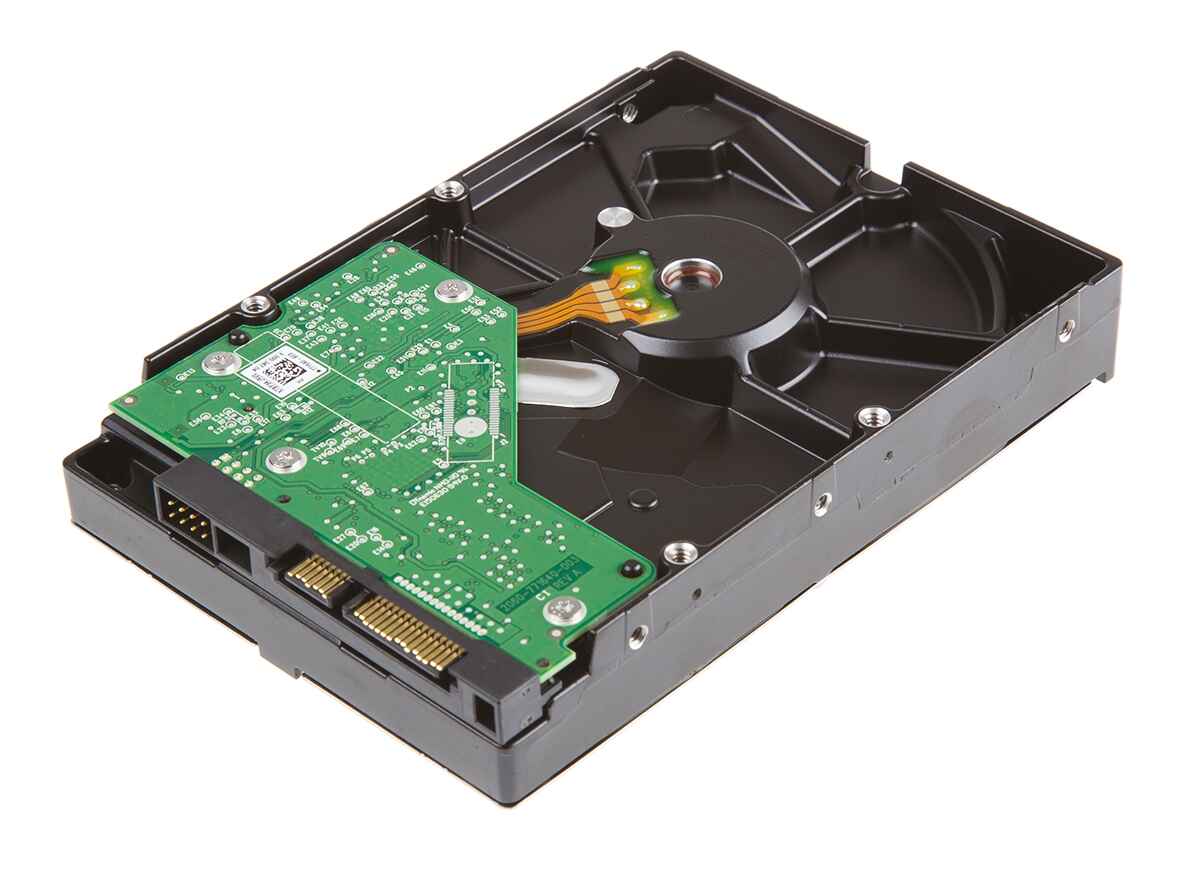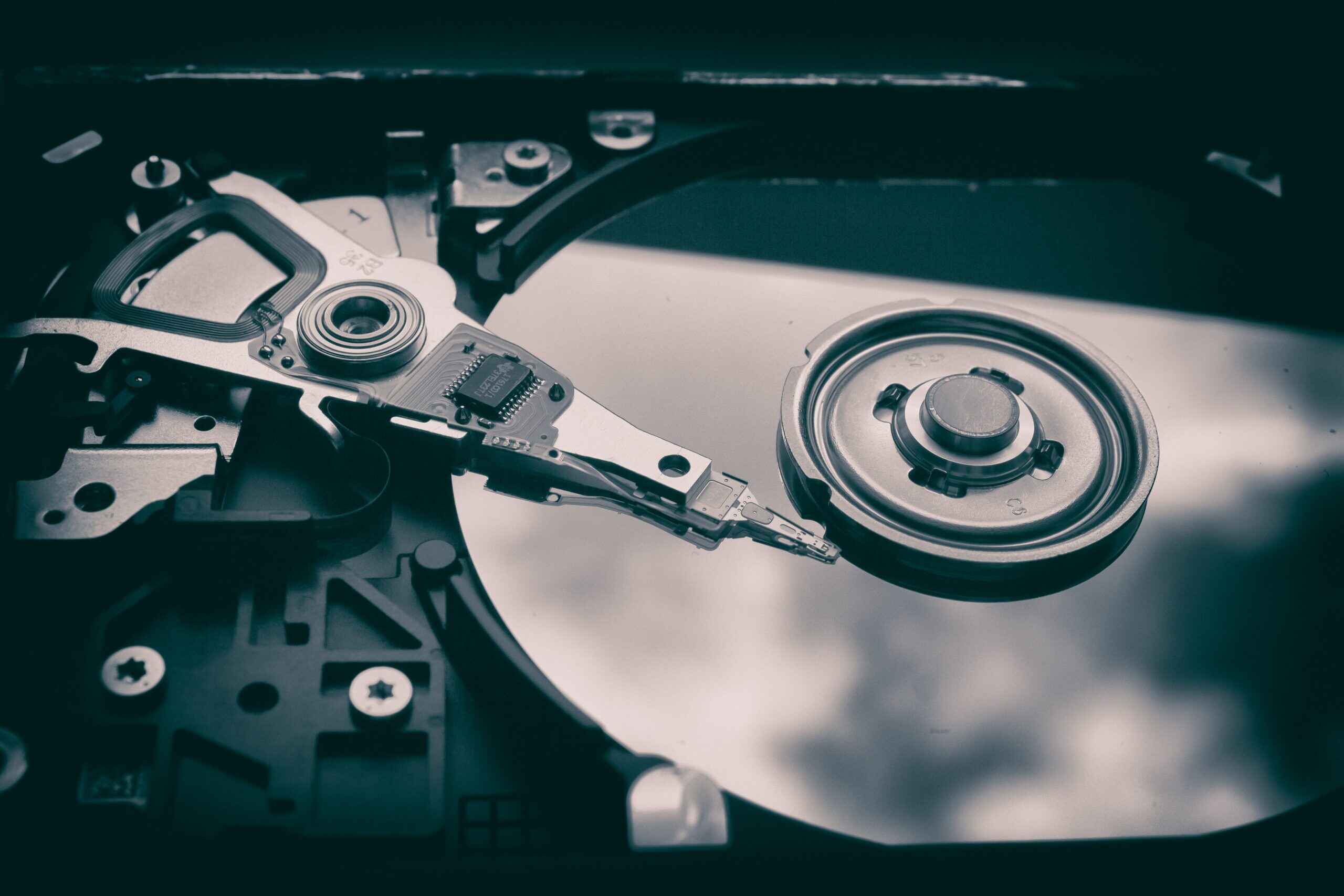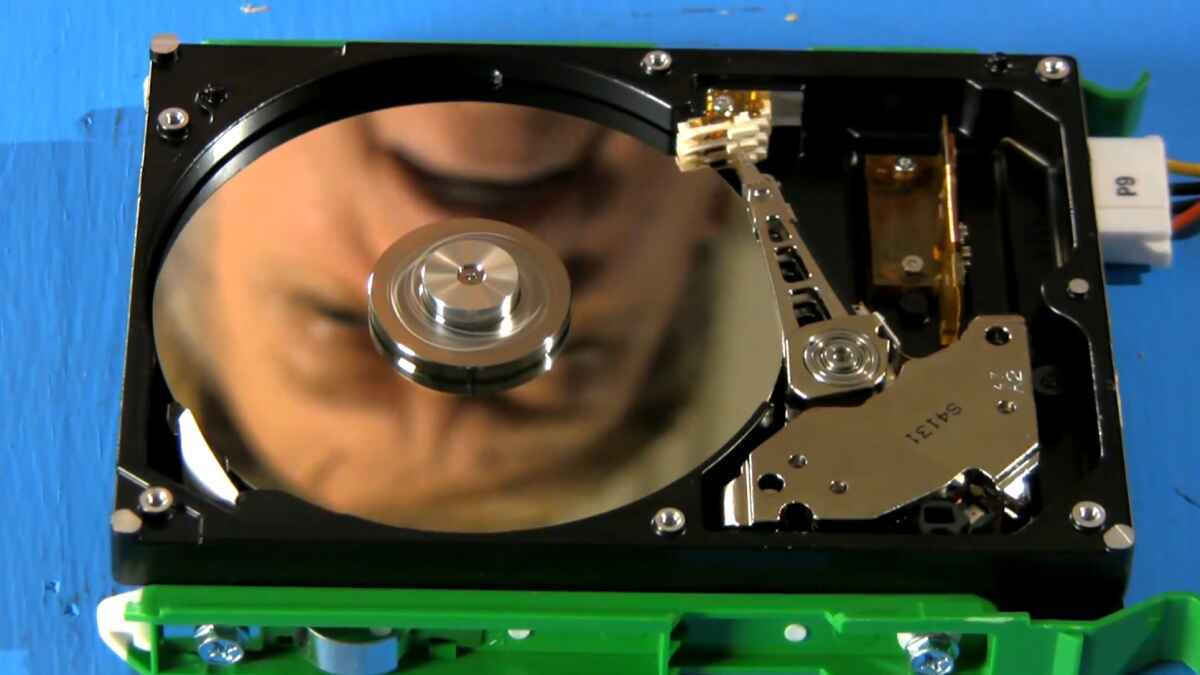Introduction
Welcome to the world of data storage! In today’s digital era, where immense amounts of information are generated every second, we rely heavily on various storage devices to house our precious data. One such device that has revolutionized the way we store and access data is the magnetic hard disk drive (HDD).
In this article, we will explore the functionality, components, advantages, and limitations of magnetic hard disk drives. Whether you’re a tech-savvy individual or just curious to learn more about this essential piece of hardware, join us as we dive into the fascinating world of HDDs.
Magnetic hard disk drives have been a staple in the data storage industry for several decades. Their reliable performance and cost-effectiveness have made them indispensable in both personal and enterprise computing environments. While newer technologies like solid-state drives (SSDs) have gained popularity in recent years, magnetic hard disk drives continue to play a vital role in storing vast amounts of data.
Throughout this article, we’ll uncover how magnetic hard disk drives work, examine their key components, discuss their advantages and limitations, and explore their common applications. By the end, you’ll have a comprehensive understanding of this remarkable storage device and its relevance in our digital lives.
What Is a Magnetic Hard Disk Drive?
A magnetic hard disk drive (HDD) is a data storage device that uses magnetism to store and retrieve digital information. It consists of one or more rigid magnetic platters coated with a magnetic material, positioned on a spindle that rotates at high speeds. The HDD also includes read/write heads that float above the spinning platters and magnetically encode and decode data.
Each platter is divided into tracks, which are further divided into sectors. These sectors are the smallest units of data storage on the HDD and typically store 512 bytes of information. Data is written onto the platters by aligning the magnetic orientations of the particles in the magnetic material, representing either a 0 or a 1, the binary language of computers.
The read/write heads are responsible for reading and writing data on the platters. To read data, the heads detect the magnetic field changes on the platter as it spins, converting them into electrical signals that are then translated into digital information. To write data, the heads apply a magnetic field to the platter, aligning the particles in the magnetic material according to the desired binary code.
A magnetic hard disk drive relies on the principle of magnetism and the precise movement of the read/write heads to access data. These heads are mounted on a mechanical arm called an actuator, which moves them across the platters’ surface to the desired track for reading or writing operations.
Magnetic hard disk drives are known for their large storage capacities, ranging from gigabytes to terabytes. They are commonly used in personal computers, laptops, servers, and other devices that require significant data storage. Since the data is stored magnetically, it remains intact even when the power is turned off, making HDDs non-volatile storage devices.
While other storage technologies such as solid-state drives (SSDs) have gained popularity due to their faster read/write speeds and lower power consumption, magnetic hard disk drives still offer a cost-effective solution for storing large volumes of data. They continue to be widely used in various applications, from personal computing to enterprise-level storage.
Components of a Magnetic Hard Disk Drive
A magnetic hard disk drive (HDD) is a complex device that consists of several key components working together to store and retrieve data. Understanding these components is crucial in comprehending the inner workings of an HDD.
1. Platters: The platters are the circular, rigid disks made of a magnetic material, typically coated with a thin layer of alloy or ceramic, where the data is stored. They spin rapidly on a spindle, allowing the read/write heads to access different parts of the disk. Each platter is divided into concentric tracks and sectors.
2. Read/Write Heads: The read/write heads are located on an actuator arm and float slightly above the surface of the spinning platters. These heads have a small electromagnetic coil that produces a magnetic field used for reading and writing data onto the platters. The read heads detect the magnetic changes on the platter, while the write heads alter the magnetic orientation to encode data.
3. Actuator: The actuator is responsible for the precise movement of the read/write heads. It positions the heads above the correct track on the spinning platter, allowing the data to be accessed or written at the desired location. The actuator arm moves the heads in both an inward and outward motion, controlled by an actuator motor.
4. Spindle Motor: The spindle motor is responsible for spinning the platters at high speeds, typically ranging from 5,400 to 15,000 revolutions per minute (RPM). The higher the RPM, the faster the data can be accessed, but it also increases power consumption and generates more heat.
5. Controller: The controller acts as the brain of the hard disk drive. It manages the data flow between the computer’s system bus and the HDD, controlling the read/write operations, error correction, and various other functions. The controller also contains cache memory to temporarily store frequently accessed data, improving overall performance.
6. Interface: The interface connects the HDD to the computer’s motherboard or storage system. Common interfaces for magnetic hard disk drives include SATA (Serial ATA) and SAS (Serial Attached SCSI), which provide fast data transfer rates and compatibility with various devices.
These components, working in harmony, allow the magnetic hard disk drive to efficiently store and retrieve data. Each component plays a vital role in the overall performance and reliability of the HDD, enabling it to serve as a reliable storage solution for a wide range of applications.
How Does a Magnetic Hard Disk Drive Work?
A magnetic hard disk drive (HDD) utilizes a combination of magnetic principles and intricate mechanical movements to store and access data. Understanding the inner workings of an HDD can shed light on its remarkable functionality.
When a computer sends a request to read or write data, the HDD’s controller communicates with the computer’s system bus to determine the location of the requested data on the platters. Here is a step-by-step breakdown of how an HDD functions:
1. Spinning the Platters: The spindle motor in the HDD spins the platters at a high speed determined by the device’s specifications. This rotational movement is crucial for both accessing and writing data.
2. Moving the Read/Write Heads: The actuator arm, controlled by the actuator motor, moves the read/write heads across the platters’ surface. This movement allows the heads to access different tracks and sectors on the spinning platters.
3. Reading Data: When the read/write heads are positioned over the desired track, the read heads detect the magnetic field changes on the platter’s surface as it spins beneath them. These changes in the magnetic pattern represent the stored data, which is then converted into electrical signals and processed by the HDD’s controller.
4. Writing Data: To write data, the write heads apply a magnetic field to the platter’s surface, creating a customized magnetic pattern representing the desired information. The pattern is created by aligning the magnetic particles in the magnetic material along specific orientations, which are interpreted as binary data by the system.
5. Error Correction and Maintenance: The controller performs error correction to ensure the accuracy and integrity of the data being read or written. It also handles various maintenance tasks, such as relocating data within the platters to optimize performance and compensate for any physical degradation over time.
The combination of precise mechanical movements, magnetic field manipulation, and intelligent data management makes the magnetic hard disk drive an incredible storage device. Despite the emergence of alternative technologies, HDDs continue to be widely used due to their cost-effectiveness, high storage capacity, and reliability.
It’s important to note that advances in technology have led to variations of the traditional magnetic hard disk drive, such as hybrid drives that combine HDDs with solid-state storage, and shingled magnetic recording (SMR) drives that increase data density. These innovations further optimize the performance and capacity of magnetic storage devices.
Now that we understand how a magnetic hard disk drive works, let’s explore the advantages and limitations of this venerable data storage solution.
Advantages of Magnetic Hard Disk Drives
Magnetic hard disk drives (HDDs) have been a dominant storage solution for decades, and for good reason. They offer several advantages that make them an appealing choice for many applications. Let’s explore some of the key advantages of HDDs:
1. Cost-Effectiveness: HDDs are cost-effective storage devices, providing a higher storage capacity per dollar compared to other storage technologies. This makes them an ideal choice for applications that require large amounts of data storage, such as servers and data centers.
2. High Storage Capacity: HDDs offer remarkably high storage capacities, ranging from gigabytes to terabytes. This allows individuals and organizations to store vast amounts of data in a single device, making it suitable for archiving, multimedia content, and other data-intensive applications.
3. Familiarity and Compatibility: HDDs have been in the market for a long time, making them a widely recognized and compatible storage solution. They can be easily integrated into existing systems and are compatible with various operating systems, making them a versatile choice for different computing environments.
4. Reliability: HDDs are known for their reliability and durability. They have undergone extensive testing and improvements over the years, resulting in stable and long-lasting devices. This reliability makes HDDs a trusted choice for critical data storage and backup solutions.
5. Data Persistence: Magnetic hard disk drives offer non-volatile storage, meaning the data remains intact even when the power is turned off. This makes them suitable for applications where data needs to be persistent, such as operating system installations, large databases, and enterprise-level storage.
6. Sequential Read/Write Performance: HDDs excel in sequential read/write operations, making them well-suited for tasks that involve transferring large files or streaming data. Sequential performance is especially important for media professionals, gaming enthusiasts, and other users working with large multimedia files.
7. Ease of Replacement: If an HDD fails, it can be easily replaced without losing the data stored on it. This is because the data remains intact even when the physical drive suffers a malfunction. This ease of replacement reduces downtime and simplifies maintenance in case of hardware failures.
While other storage technologies like solid-state drives (SSDs) offer advantages in terms of speed and energy efficiency, magnetic hard disk drives continue to hold their own due to their cost-effectiveness, high storage capacities, and reliability. They have evolved over the years to meet the increasing demands of data-intensive applications and remain a popular choice in various sectors.
Now that we’ve examined the advantages of HDDs, let’s explore some of the limitations that need to be considered.
Limitations of Magnetic Hard Disk Drives
While magnetic hard disk drives (HDDs) offer numerous advantages, they also have certain limitations that need to be taken into consideration. Understanding these limitations can help users make informed decisions when it comes to choosing the right storage solution. Let’s explore some of the key limitations of HDDs:
1. Mechanical Components: HDDs consist of several mechanical components, including spinning platters and moving read/write heads. These mechanical parts make HDDs more susceptible to physical damage, such as head crashes or motor failures, especially in environments with excessive vibrations or shocks.
2. Relatively Slower Speeds: While HDDs have improved over the years, they still have slower read/write speeds compared to solid-state drives (SSDs). This slower speed can result in longer boot times, file transfers, and application loading times, particularly for random read/write operations.
3. Power Consumption: HDDs consume more power than SSDs due to their mechanical components and spinning platters. This higher power consumption can lead to increased energy costs in system deployments, especially in environments with many storage devices.
4. Fragility: Due to their mechanical nature, HDDs are more susceptible to damage from physical shock, drops, or mishandling. This fragility can pose a risk to the integrity of the stored data if the drive is not handled with care.
5. Noise and Heat Generation: The mechanical components of HDDs produce noise and heat during operation. The spinning platters, in combination with the movement of the read/write heads, can result in audible sounds and heat generation, which may be a concern in noise-sensitive environments or poorly ventilated enclosures.
6. Limited Lifespan: HDDs have a limited lifespan due to the wear and tear associated with their mechanical components. Over time, the spinning platters and moving read/write heads can degrade, potentially leading to reduced performance or drive failure.
7. Fragmentation and Performance Degradation: As data is written and deleted on an HDD, fragmentation can occur, resulting in scattered data across the platters. This fragmentation can lead to decreased performance over time, as the read/write heads have to access different areas of the platters to retrieve the fragmented data.
While magnetic hard disk drives have their limitations, they continue to be widely used due to their cost-effectiveness and high storage capacity. It’s essential to consider these limitations and evaluate the specific requirements of your use case when choosing the right storage solution.
Now that we’ve explored the limitations of HDDs, let’s move on to discussing the common applications of magnetic hard disk drives.
Common Applications of Magnetic Hard Disk Drives
Magnetic hard disk drives (HDDs) have been a ubiquitous storage solution for a long time, finding applications in various industries and devices. Let’s explore some of the common applications where HDDs continue to play a vital role:
1. Personal Computers and Laptops: HDDs are widely used in personal computers and laptops as primary storage devices. They provide ample storage capacity for operating systems, applications, documents, multimedia files, and other data, making them suitable for everyday computing needs.
2. Enterprise Data Centers: Data centers require high-capacity storage solutions to handle massive amounts of data generated by businesses and organizations. HDDs are commonly used in data centers to store vast amounts of data and provide reliable access for critical applications, virtual machines, and databases.
3. Network Attached Storage (NAS) Devices: NAS devices are used for centralized storage and sharing of files in homes, small offices, and enterprise environments. HDDs are often employed in NAS devices, providing cost-effective and scalable storage solutions for backing up data, file sharing, and media streaming.
4. Video Surveillance Systems: Video surveillance systems generate large volumes of data from security cameras. HDDs are used to store and manage this video footage, providing reliable and high-capacity storage for surveillance applications in both residential and commercial settings.
5. Media and Entertainment: HDDs are commonly utilized in the media and entertainment industry for storage-intensive applications like video editing, post-production, and content distribution. HDDs can accommodate large video files, rendering them suitable choices for professionals working with high-resolution multimedia content.
6. Network Storage Systems: Network storage systems, such as SAN (Storage Area Network) and DAS (Direct Attached Storage), often rely on HDDs to provide shared storage accessible by multiple servers or workstations. These systems are commonly used in enterprise environments where consolidated and scalable storage is required.
7. Backup and Disaster Recovery: HDDs are frequently used for backup and disaster recovery purposes. They provide a cost-effective and reliable way to create backup copies of critical data and facilitate recovery in the event of data loss or system failures.
8. Gaming Consoles: Gaming consoles utilize HDDs to store game installations, updates, and downloadable content. With the increasing size of modern games, HDDs provide the necessary storage capacity to accommodate large game libraries.
While alternative storage technologies, such as solid-state drives (SSDs), are gaining popularity in some of these applications, magnetic hard disk drives remain prevalent due to their high storage capacity, cost-effectiveness, and compatibility. They continue to serve as a reliable and widely adopted storage solution in diverse industries and devices.
Now that we’ve explored the common applications of HDDs, let’s conclude our discussion on the fascinating world of magnetic hard disk drives.
Conclusion
Magnetic hard disk drives (HDDs) have been a cornerstone of data storage for decades, offering high storage capacities, cost-effectiveness, and reliability. Despite the emergence of alternative technologies like solid-state drives (SSDs), HDDs continue to play a vital role in various applications and industries.
In this article, we explored the ins and outs of magnetic hard disk drives. We learned about their components, including platters, read/write heads, actuators, and controllers, and gained an understanding of their functionality. HDDs work by utilizing magnetism to store and retrieve data, spinning platters, and precise mechanical movements.
We discussed the advantages of HDDs, such as cost-effectiveness, high storage capacities, familiarity, and compatibility. Additionally, we acknowledged the limitations of HDDs, such as their mechanical nature, slower speeds compared to SSDs, power consumption, and fragility. Despite these limitations, HDDs remain a popular choice in various applications, from personal computers and enterprise data centers to video surveillance and media editing.
As technology continues to evolve, it’s important to consider the specific requirements of your use case when selecting a storage solution. While SSDs offer faster speeds and lower power consumption, HDDs provide a cost-effective option for storing large volumes of data and remain relevant in many scenarios.
Whether you’re a casual computer user or an IT professional, understanding the fundamentals of magnetic hard disk drives is crucial in navigating the ever-changing landscape of data storage. By staying informed about HDDs and their capabilities, you can make informed decisions when it comes to selecting the best storage solution for your needs.
In conclusion, magnetic hard disk drives remain a reliable and widely used storage technology, offering high storage capacities, cost-effectiveness, and compatibility. As we continue to generate and store vast amounts of data, HDDs continue to provide a viable solution for our data storage needs.







